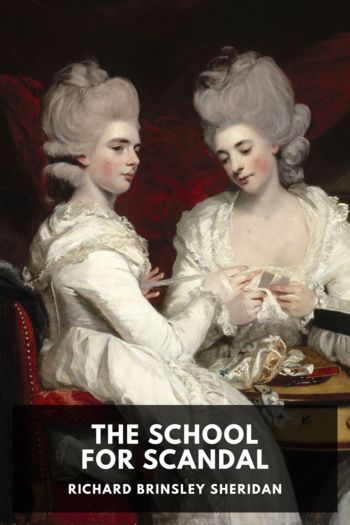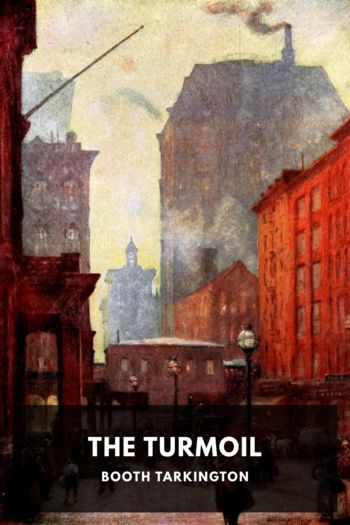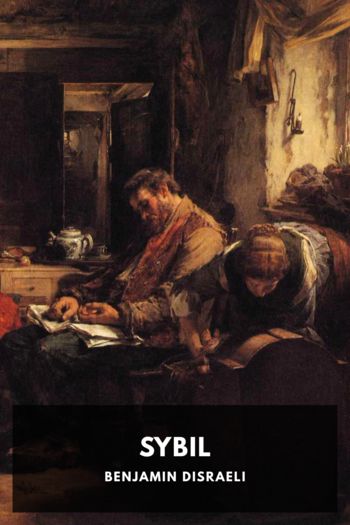Malaysian Maverick: Mahathir Mohamad in Turbulent Times, Barry Wain [best mystery novels of all time .txt] 📗

- Author: Barry Wain
Book online «Malaysian Maverick: Mahathir Mohamad in Turbulent Times, Barry Wain [best mystery novels of all time .txt] 📗». Author Barry Wain
Actually, it was the cost of Seri Perdana, not the bricks and mortar, that proved illusory. As speculation and criticism mounted in 1998, a deputy minister in the Prime Minister's Department told Parliament that the residence was divided into "public amenities" and "private quarters", and the private areas would cost "only" RM17 million. In response to Anwar's revelations, the deputy minister adjusted the cost of the private quarters to RM17.5 million and disclosed that the other facilities, such as a banquet hall and state rooms for visiting dignitaries, would amount to RM57.5 million.[29] In 1999, the deputy minister added an extra RM45 million to the bill — for "software", he told Parliament.[30] That would raise the overall cost to about RM120 million, but in 2003 an opposition legislator received a written reply from the Prime Minister's Department with a fresh tally. The final cost: RM201 million, exceeding Anwar's shocking figure.[31]
Incredibly, Dr. Mahathir argued that he designed Seri Perdana so big specifically to accommodate Anwar, who has a large family. Had he resigned in 1998 and Anwar taken over as planned, Dr. Mahathir would not have moved to Putrajaya at all, he said. "And the house for the prime minister, because the incoming prime minister, I thought, was going to have six children, so I built six [bed]rooms, not for me. This is for the future. We would like to have, for the residents there, like a White House...Not, whenever you change prime minister, you change residence because it's not big enough".[32]
In fact, it was Dr. Mahathir who made a habit of changing official homes, Seri Perdana being the second prime ministerial residence he built for himself. His immediate predecessors, Razak Hussein and Hussein Onn, occupied what was supposed to be the permanent quarters for Malaysian premiers, Sri Taman in Kuala Lumpur's Lake Gardens. Dr. Mahathir turned Sri Taman into a memorial for Razak and spent RM11 million, not counting the cost of land, to build the first Sri Perdana in Kuala Lumpur, completed in 1983.[33] It became Galeria Sri Perdana, a memorial for Dr. Mahathir, when he relocated to Putrajaya in 1999.[34]
As an Asian Silicon Valley, the RM8 billion Multimedia Super Corridor was envisaged by Dr. Mahathir as an information nucleus not only for Malaysia but for the entire region. Launched in 1996, it consisted of a zone 50 kilometres by 15 kilometres linking Kuala Lumpur with Putrajaya and the airport. Wired with advanced telecommunications, it served as an industrial park to attract high-tech industries to Malaysia. Dr. Mahathir recruited a high-profile panel, consisting of a who's who among global information technology players, led by Microsoft's Bill Gates, to advise him on the strategic direction of the venture. But it did not take off fully, partly because the government failed to gear Malaysia's universities to produce specialist graduates required by a knowledge economy.[35] It also lacked the equivalent of a Stanford University, a dynamic research centre where imaginative ideas found urgent commercial solutions to technical problems.[36] The Multimedia Super Corridor generated just US$2 billion in economic activity in a decade, missing the tech outsourcing boom that went mainly to India.[37]
Even as Dr. Mahathir prepared to move out of Kuala Lumpur, he sought to upgrade it into a more cosmopolitan commercial capital befitting the Malaysia of his dreams. Founded as a bedraggled tin-mining town in 1857, Kuala Lumpur was still largely an urban hodgepodge more than a century later. Officially made the capital of Selangor state in 1880, replacing the port of Klang, it became the capital of Malaya/Malaysia, but was granted city status only in 1972 and declared a federal territory two years later. By separating Kuala Lumpur from surrounding Selangor, the government ensured that the capital could not be controlled by an opposition party, at the same time weakening Chinese influence in the state. The first time Dr. Mahathir caught sight of Kuala Lumpur, he thought it very bleak. "I said, 'why don't you plant trees?' I kept on saying this but it never happened...until you have the authority to say, 'Plant!'"[38]
Armed with prime ministerial authority, Dr. Mahathir did a great deal to create a greener capital immediately after he came to power in 1981. In 1997, he ordered Malaysians to start planting seriously, with the target of adding three million trees throughout the country by 2000 — Kuala Lumpur's quota was 220,000 — and 20 million by 2020. An interim goal was to create a garden nation by 2005. The campaign got a boost on 15 October 2000, World Habitat Day, when Dr. Mahathir joined many other Malaysians in planting 110,461 trees in just one minute. Sure enough, it was sufficient to claim a world record, dwarfing the previous best effort, 24,199 trees planted in a week, set in Sao Paolo, Brazil, in 1976.
Acting as the de facto lord mayor, Dr. Mahathir took a personal interest in Kuala Lumpur's transformation, nothing being too small to overlook. According to Chandran Jeshurun, an academic who researched a book on the capital,[39] Dr. Mahathir paid close attention to heritage conservation and directly contributed to the preservation of some treasures. One was an old railway station with Moorish-style minarets and domes. It was renovated and extended, "with a very sensitive touch for historical and architectural detail".[40]
In 1984, Dr. Mahathir offended the local construction industry by insisting that the contract for the Dayabumi complex, a showcase commercial building and then the city's tallest, go to two Japanese companies that were outbid





Comments (0)